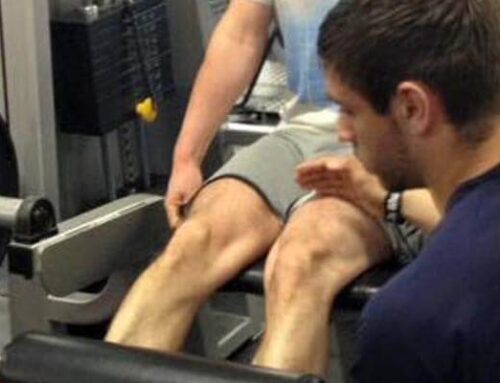Before you get to the programming, the methodologies or the rep ranges involved in training for a better physique, we need to take a closer look at the way we actually perform exercises.
Even closer than this, we need to pay close attention to the hardest parts of the rep – the end ranges.
The end ranges of any given rep are usually where you’re weakest. In the maximally lengthened or maximally contracted range, you’re super weak – compared to the ‘mid range’ of the rep where you’re naturally much stronger.
This is known as the ‘strength curve’. If you think about the ends of the strength curve as being the ‘weak’ areas, where your muscle is fully lengthened or fully shortened, then it makes logical sense that the mid area between these two points is our strongest area.
Most people train in this mid range, because they’re already strong there and it feels good to be able to move big weights around in the gym. The mid range is fine, and it’s important to train – but if you stay in this area indefinitely then you’re massively limiting your growth potential. Training where we’re already strong doesn’t leave us much room to progress, because we’re already strong in that range, right? Sure, we can get stronger, but this will only heighten the imbalance that already exists in any given muscles’ strength curve.
Therefore, logically speaking, it only makes sense to spend a good amount of time working in the ranges where we’re WEAK on each muscle. This is by far our best opportunity for growth – but nobody wants to do this work because it’s not pretty, it’s not ego boosting and you won’t be slinging tons of weight around in the gym.
How Do You Target The End Range?
So first of all, any exercise has an ‘end range’, it quite simply refers to the extreme of the movement, be that at the bottom of the top of a rep. Whenever you change direction on any given rep, this is the point in time at which you need to exert the most control. The vast majority of people ‘bounce’ out of the bottom or top ranges on any given rep, and as such end up using more momentum and/or stretch reflex rather than their actual target muscle.
Take the squat for example. The most beneficial range during a squat in terms of tension and potential for development of the quads is the very bottom portion of the movement. Yet most people (if they even get to that depth) are bouncing out of the bottom third of the movement in order to simply move weight around. If your goal is to move weight (i.e. powerlifters or strength athletes) then that’s fine, but if you’re reading this article then I’m assuming your goal is to build bigger muscles – in which case you need to be exerting more control in the bottom third of your squats.
This isn’t just applicable to squats, it applies to absolutely everything from a bench press to a bicep curl. Whenever you change direction on a movement exert a huge amount of control, eliminate as much momentum as you possibly can and concentrate on using the muscle to pull you out of that weak range – whether it’s a contracted or lengthened range, and you might not be able to pull huge weights but you will likely see a huge increase in your muscularity as a result.
The Benefit Of Internal Cues
We’re very much used to hearing ‘external’ cues. “Keep your chest up”, or “push your knees out”, things of that nature. These are important in the early days of training, as it’s really your only reference point in terms of learning how to execute movements. However, once we have established the basics and we actually know how to move, internal cues are the next stepping stone on the way to mastering our own bodies.
Internal cues are things you do internally, such as consciously contracting the biceps before you curl, consciously loading the quads on the lowering phase of a squat or leg press. It’s things that the naked eye might not be able to see, but things that become very real when you can feel them working during your sets.
Internal cues are really the key to mastering the end ranges of exercise. If you can maintain tension right to the very top of a dumbbell curl and apply the internal cue of consciously squeezing the biceps as hard as you physically can in it’s fully contracted position (and do the same in it’s fully lengthened position), you can be sure you’re getting the most out of that exercise. If you aren’t utilising internal cueing and you’re simply going through the motions, chances are you’re losing massive amounts of tension when you get to the end ranges of the exercise and you’re massively limiting your potential for growth.
Wrapping Up
I hope that made sense and gave you a little bit of context on why it’s important to master your execution of exercises – especially the end ranges of any given rep.
If you have any questions I’d love to hear from you, drop me an email at info@andyclementsfitness.co.uk
If you enjoyed this article don’t forget to check out the rest of my stuff over at the Blog Section.
Also – check out my content on other platforms:
Facebook: Andy Clements Fitness
Instagram: @andyclements01
YouTube: Andy Clements Fitness
Cheers
Andy





